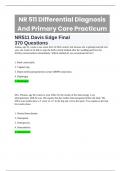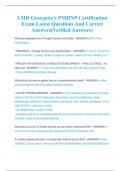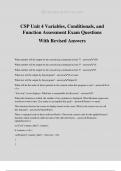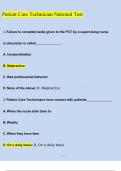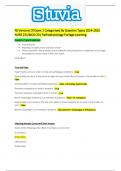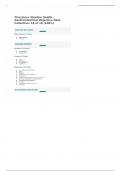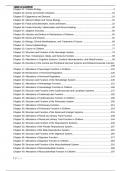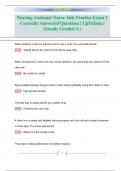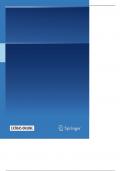Exam (elaborations)
NR 511 Differential Diagnosis And Primary Care Practicum NR511 Davis Edge Final |370 Questions
- Course
- Institution
NR 511 Differential Diagnosis And Primary Care Practicum NR511 Final |370 Questions Joanne, age 23, wants to use some form of birth control, but because she is getting married next year, she wants to be able to stop the birth control method after the wedding and have her fertility restored almos...
[Show more]
